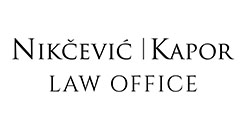New Agreement might be a new chapter in protection of unique European products between the EU and China.
On 1 March 2021, a bilateral Agreement between the European Union (EU) and China on cooperation and protection of geographical indications (GIs) entered into force. Therefore, as of that date, ninety new GIs (and as a consequence also the related products) of Chinese origin were included on the EU register of protected geographical indications. For comparison, in 2020 the EU registered around forty new GIs, and in 2019 twenty-five – all of them protected products of European origin only. Among the Chinese products that are now protected in Europe by GIs are Anji Bai Cha (Anji white tea), Panjin Da Mi (Panjin rice) and Anqiu Da Jiang (Anqiu ginger).
At the same time, the Chinese register of protected geographical indications was also extended for European GIs such as Cava, Champagne, Feta or Polish Vodka (the only Polish indication covered by the Agreement). Both parties are continuing their discussion and China is considering whether to protect in future such indications as: herbal vodka from the North Podlasie Lowland aromatised with an extract of bison grass (Wodka ziolowa z Niziny Polnocnopodlaskiej aromatyzowana ekstraktem z trawy zubrowej), apples from Grojec (Jablka grojecke), apples from Lącko (Jablka lackie), deep-fried cheese in the Great Poland style (Wielkopolski ser smazony) or cherries grown along the Vistula (Wisnia nadwislanska).
Protection of geographical indications might help in opposing against misleading trademarks
Producers of the products protected by other EU GIs may still apply for their GIs to be included on the register, even if those GIs (and as a consequence also the related products) were not included on the initial list agreed between China and the EU. As a matter of fact, both China and EU encourage the interested stakeholders to submit new proposals of GIs for protection. The parties also agreed to enforce the protection of the GIs against the use of any means in the designation or presentation of a good that indicates or suggests that the good in question originates in a geographical area other than the true place of origin in a manner which misleads the public as to the geographical origin of the product (including goods accompanied by expressions such as “kind”, “type”, “style”, “imitation” or the like).
Moreover, the parties will, ex officio or at the request of an interested party, refuse or cancel the registration of a trademark consisting of a geographical indication or a translation or transcription thereof if the given products, despite being identical or similar, do not have the origin indicated by the geographical indication.
The aforementioned measures will be applied only if the registration of the trademark was requested after the date of commencement of protection of the GIs agreed upon in the Agreement.
Unlike trademarks, GIs protected under the Agreement and their use in the territory of the other Party, are not subject to any additional administrative fees, provided that they are recognised as protected in the country of their origin, which in turn may entail certain financial expenditure (e.g. in Poland, granting protection to a GI is subject to a fee of PLN 1,000/around EUR 220). In this context, some producers, who do not want to take on the financial and administrative burdens pertaining to the registration of the trademark worldwide, may find the opportunities provided under this Agreement very interesting.
It must be stressed that the protection resulting from a particular geographical indication does not mean that the product which benefits from it meets the Chinese regulatory requirements. On the contrary, after obtaining protection for a particular geographical indication, producers and exporters must ensure that their products comply with Chinese law.
According to the data published by the European Commission and the European Council, China remains among the top 3 countries to which European agri-food products are exported. For example, in the period between September 2018 and August 2019, the value of exports to China reached around €12.8 billion. 9% of all the products exported to China from Europe were protected by GIs, including wines and spirits.
By Jakub Lerner, Associated Partner, and Anna Mirek, Senior Associate, Noerr





























